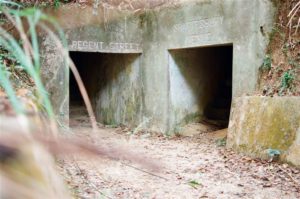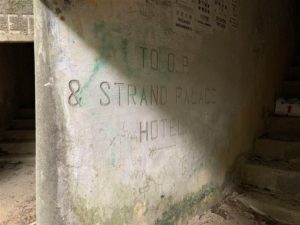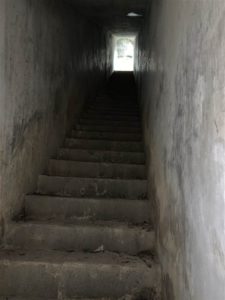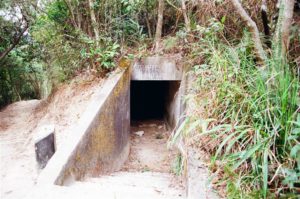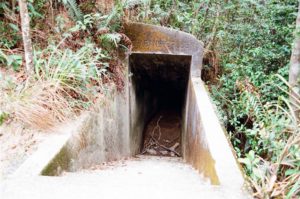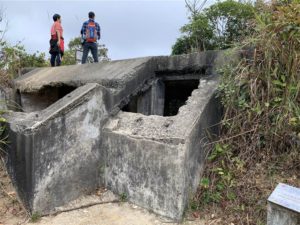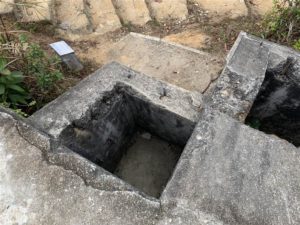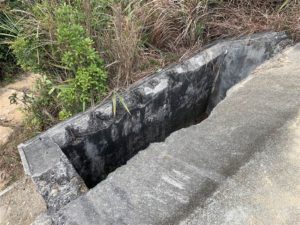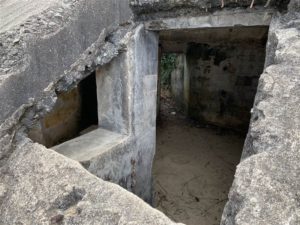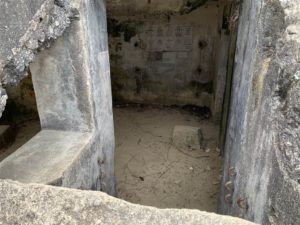The Shing Mun Redoubt on Maclehose Trail Section 6
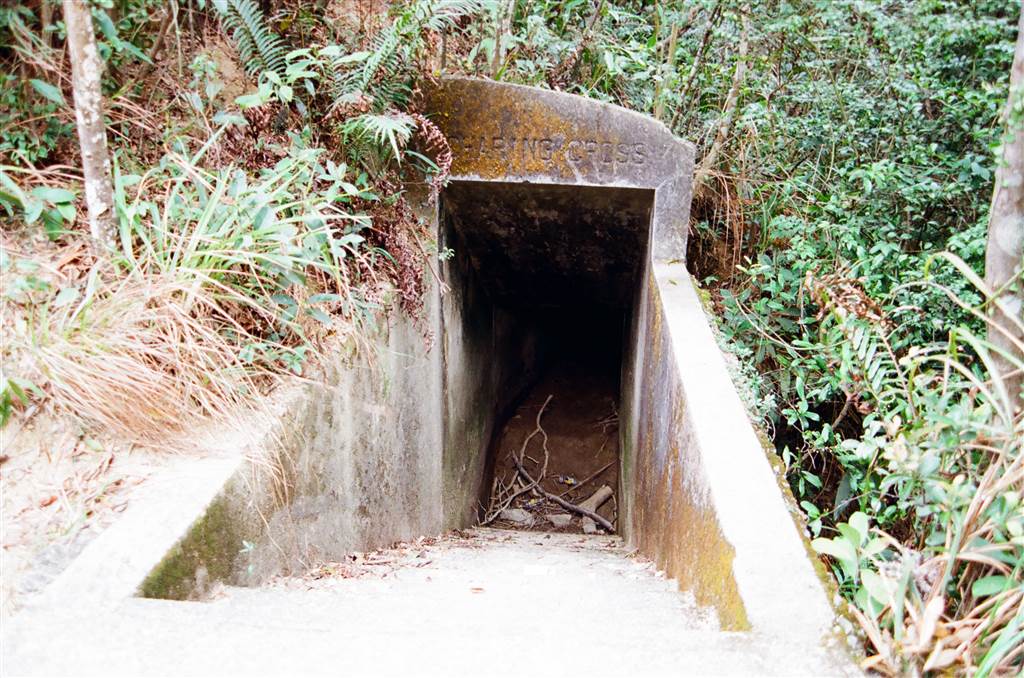
This would be my second try at finding the War Relics Trail, also known as Maclehose Trail Section 6. Last time, I attempted to reach this section of the Maclehose Trail by the starting point of the Kowloon Reservoir. I was lost. The War Relics are closer to the Pineapple Dam in Shing Mun Reservoir. So I chose that as the beginning point this time.
Finding the War Relics Trail
From the Pineapple Dam, turn right when facing the Shing Mun Country Park Plaque. Walk for 1 km to reach the Shing Mun Reservoir, which has a beautiful reservoir scenery. Continue with the trail and reach the BBQ area. The Maclehose Trail Section 6 sign will show you the steps up the War Relics Trail.
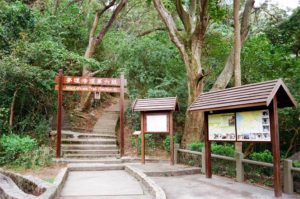
The History of Gin Drinkers’ Line and Shing Mun Redoubt
The War Relics Trail consists of a system of trenches, tunnels, air vents to end with the Shing Mun Redoubt. This immensely interesting group of WWII structures were part of the Gin Drinkers’ Line. The British built this defensive line between 1937 and 1938. Intended to be the “Oriental Maginot Line,” it was a defense against the Japanese invasion of Hong Kong in 1941.[1] It extends east-westward on the New Territories between formerly Gin Drinkers Bay (now Kwai Chung), all the way to Sai Kung in the East. Passing Kam Shan, Shing Mun Reservoir, Lion’s Rock, Tate’s Cairn, Kowloon Peak and Shatin, the Gin Drinkers’ Line had a total length of 18 kilometers.[2]
On December 8th, 1941, Japanese forces launched its invasion on Hong Kong from Shenzhen. The Shing Mun Redoubt served as the command headquarters for British forces on the Gin Drinkers’ Line. Spanning an area of 12 acres, it consists of a vast system of underground observation posts, tunnels, trenches and pillboxes guarding the most vulnerable land route into Kowloon. On December 9th, Colonel Doi Teishichi commanding the 228 Regiment of the Japanese forces launched an assault on the Shing Mun Redoubt from Needle Hill (now the Shatin area).[3]
What the British thought would take weeks of defense at the Gin Drinkers’ Line, the Japanese troops accomplished in a couple days. In just two days after, the Shing Mun Redoubt fell, and the Gin Drinkers’ Line collapsed. With that, Kowloon fell into Japanese hands. The defense moved quickly back to Hong Kong Island. In the week of December 18th to 25th, Japan and Britain engaged in serious battles for the control of Hong Kong Island. On December 25th, 1941, Hong Kong fell, thus beginning the Japanese rule of Hong Kong for the next three years and eight months.
See here for more on the Battle of Hong Kong in 1941 at the Pinewood Battery.
Views on the Ground
There was a bit of a hike up the hill to see the War Relics. After about 15 to 20 minutes of continuous walk on upward steps, I reached the first relic, which was a simple air vent.
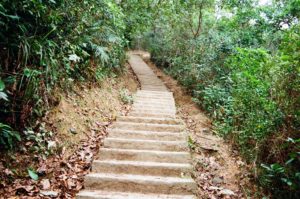

This is a trench in ruins, leading to a tunnel.

The signs did caution the tourists not to walk these tunnels, but I confess that I did walk one. At the Regent Street and Shaftesbury Avenue opening, I made it up the stairs on Shaftesbury Avenue. When I entered the opening, which was rather short, I hunched instinctively. But once getting in, I realized that it was a normal height, all the way up the stairs.
Apparently, the British named these tunnel systems with actual locations in Britain to aid the English soldiers of the Middlesex Regiment.[4]
The Shing Mun Redoubt and its observation posts could call artillery support from the Mount Davis Battery and Stonecutters Island Fort. Its four pillboxes were fitted with guns.[5]
Despite this gloomy day, the view of Kwai Chung’s urban scenery was really quite amazing.

Finally, at the Shing Mun Reservoir, our Macaque Monkey friends were raging a war of their own.
[1] The Wikipedia on the Gin Drinkers’ Line.
[2] Id.
[3] The historical descriptions on site at the Maclehose Trail Section 6.
[4] Supra note 1.
[5] Id.

